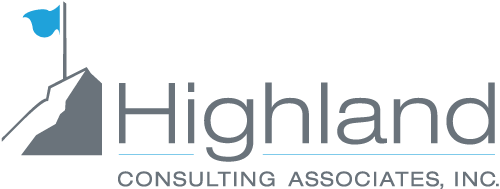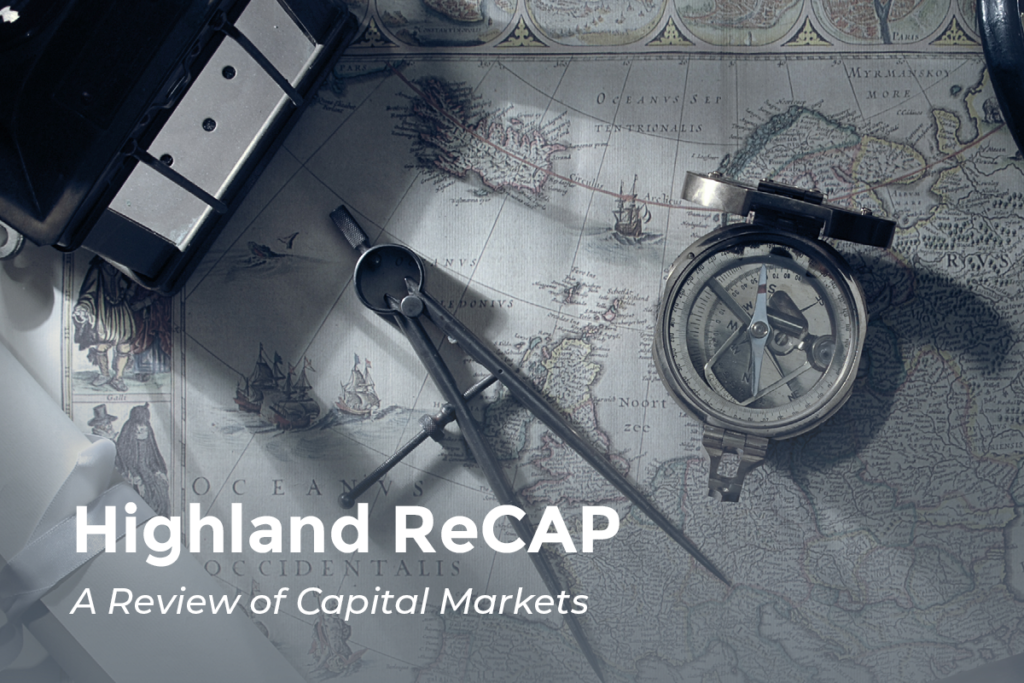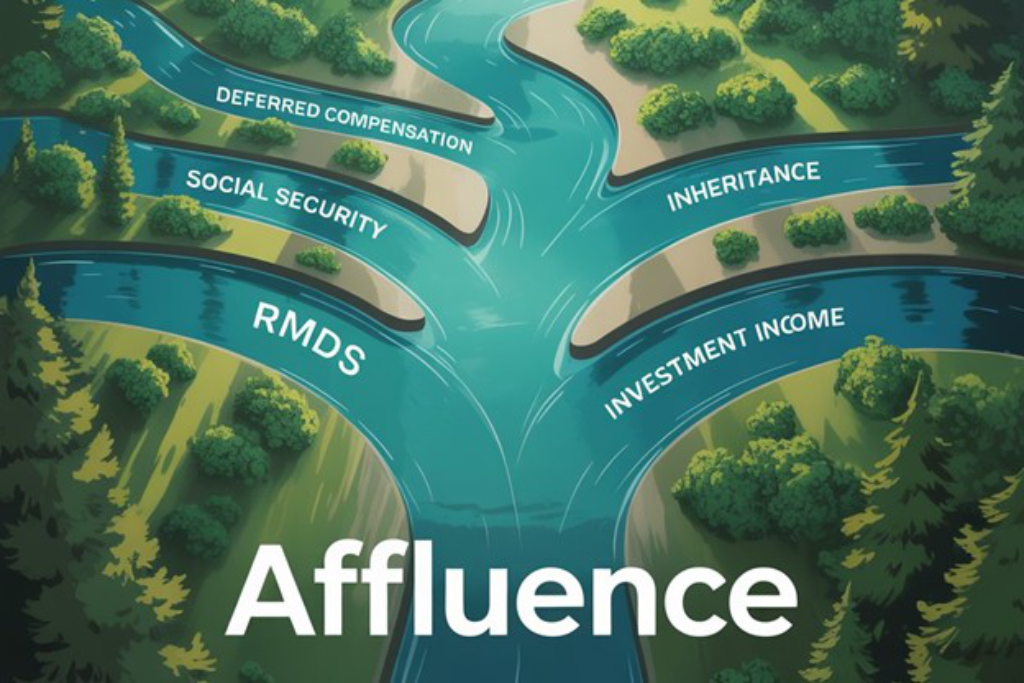Is Your 401(k) Ready for Private Assets? A Look Beyond the Promise

photo credit: Ideogram
As the landscape of retirement savings continues to evolve, new proposals and potential opportunities emerge, promising enhanced returns and greater diversification for plan participants. Recently, discussions in Washington, D.C. have centered on the possibility of allowing private assets to become a more accessible component of 401(k) plan lineups, either as standalone options or as part of target date funds. On the surface, this might sound appealing – the allure of private assets’ potential for higher returns, often touted in institutional circles, could be enticing for individuals saving for their future.
However, at Highland, we recall similar enthusiasm just prior to the Global Financial Crisis, when private asset managers actively advocated for their inclusion in broader investment portfolios. This historical context encourages a measured and cautious approach to any significant shift in the types of assets held within defined contribution plans. Here, we will delve into the fundamental investment considerations and inherent challenges of introducing illiquid private assets into asset pools that are designed to provide daily liquidity for millions of American savers—with a focus on private equity as equity represents the largest asset class of retirement savings. We explore:
- Government and regulatory perspectives
- Core investment complexities and challenges
- Practical considerations that plan sponsors must carefully evaluate to make informed and fiduciarily sound decisions for their employees' retirement futures.
The Evolving Government and Regulatory Perspective
The current discourse on the issue is not new. It gained notable traction with an Information Letter issued by the Department of Labor (DOL) in June 2020. This letter suggested that plan fiduciaries would not automatically breach their ERISA duties by including a professionally managed asset allocation fund with a private equity component as an investment option.
However, this initial guidance was later clarified and significantly tempered by a Supplemental Statement from the DOL in December 2021. This subsequent communication emphasized the substantial fiduciary responsibilities and inherent complexities associated with private equity. The DOL underscored that private equity investments are typically more intricate, have longer investment horizons, are less liquid than publicly traded assets, and often come with higher fees. The statement stressed that fiduciaries considering private equity must possess significant expertise in this area or rely on qualified, independent experts to navigate the selection and ongoing monitoring of such investments prudently.
Adding complexity to this evolving landscape, there have been ongoing reports of a potential executive order aimed at further encouraging the inclusion of private assets in 401(k) plans. While the specifics and timing of such an order remain uncertain, it signals a continued interest at the executive level in broadening access to these types of investments within defined contribution frameworks. Meanwhile, some large asset managers are already developing or offering products that incorporate private equity into target date fund structures.
The overarching message from the government, while not an outright endorsement, suggests a willingness to consider private equity within 401(k) plans, but with a persistent and critical emphasis on the unique characteristics of these investments and the demanding fiduciary obligations that set them apart from traditional public market offerings. The central debate is not about a simple "yes" or "no," but rather about understanding how and under what conditions such illiquid assets can be prudently integrated into retirement plans designed for daily liquidity.
Unpacking the Complexities: Core Investment Challenges
As momentum builds around the idea of incorporating private equity into 401(k) plans, it's crucial to look past the allure of diversification and potentially enhanced returns. At the heart of the debate lie deep investment challenges that could disrupt the traditional framework of participant-directed retirement plans, including Illiquidity, access to high-quality funds, managing capital calls, dealing with fund flows, and communicating performance lags and monitoring.
1. Exit Liquidity: A Changing Landscape for Private Equity
The key issue in bringing private equity into 401(k)s is liquidity. Unlike publicly traded stocks or bonds, or open-ended mutual funds which can typically be bought and sold on a daily basis, private equity investments are inherently illiquid. Capital is often committed for extended periods, typically 7 to 10 years or more, with limited opportunities for early exit. This poses an immediate challenge for 401(k) plans, which are designed to provide participants with access to their funds for various reasons, including rollovers, hardship withdrawals, and rebalancing, all on a potentially daily basis.
More critically, the lifeblood of private equity is leverage, the use of borrowed funds to finance acquisitions and operations. This leverage is crucial for a smooth functioning private equity market, as it enables larger deals to proceed and provides the necessary capital beyond just equity to acquire target companies. Historically, a low-interest rate environment, coupled with abundant and accessible financing, provided a significant tailwind for private equity deal volume and value.
More recently, however, the landscape has shifted. Persistently higher inflation has led to a significant increase in interest rates compared to the prior decade. This has profound implications for private equity deal making. The increased cost of borrowing and reduced availability of debt mean that financing now poses a hurdle, rather than a consistent enabler, to robust activity and profitable exits. In many cases, the equity provided by private equity firms alone is insufficient to complete certain transactions at attractive valuations.
Furthermore, rising interest rates directly impact the discount rates used to value private equity investments. As interest rates climb, so do the discount rates, leading to lower present-day valuations for assets that were acquired in a lower-rate environment. This "marking down" of assets can make it more challenging for private equity firms to achieve profitable exits at their desired multiples, contributing to a backlog of portfolio companies awaiting sale.
Adding to these pressures, many traditional institutional investors, such as pension funds and endowments, may already have substantial allocations to private equity. Faced with their own potential liquidity needs or concerns about overall asset allocation in a changing market, their capacity for new private equity commitments may be limited. This slowdown in traditional fundraising and investment activity creates a bottleneck for private equity firms looking to divest their existing portfolio companies.
In this context, the vast and relatively untapped capital held within retail investors' 401(k) plans could be viewed by some in the private equity industry as a critical new source of liquidity. Instead of primarily focusing on enhanced returns and diversification for plan participants, the push for private equity in 401(k)s might, in part, serve as an avenue for current private equity investors to find buyers for their holdings in a more challenging exit environment. This raises a fundamental question: Whose interests are truly being prioritized in this potential expansion?
2. Access to High-Quality Funds
While the allure of private equity often centers on the potentially higher returns generated by top-performing funds, gaining access to these elite managers is far from straightforward for the 401(k) market. The reality is that the best private equity funds are typically oversubscribed and impose substantial minimum investment requirements, often in the tens or hundreds of millions of dollars, making direct investment by individual 401(k) plans virtually impossible.
However, the challenge of access goes deeper than just high minimums. While an entity sponsoring an investment lineup (like a recordkeeper for a target date fund) can pool assets across its platform to potentially meet these minimums, a critical question remains: What is the incentive for high-quality, long-term, and consistently top-performing private equity fund families to open their investments to the retail investor market within 401(k) plans? These premier funds can already raise capital easily from large, sophisticated institutional investors who commit for the long haul and understand the illiquid nature of the asset class. Diversifying their investor base to include a vast number of smaller, potentially more active or short-term oriented commitments could introduce significant administrative burdens and a mismatch with their long-term capital deployment strategies. The reality is that there is little demand or likelihood for plan sponsors to offer stand-alone private asset investment options, but it is a reality that target date fund managers will be the largest conduit for injecting this asset class into 401(k) menus.
The implication of this dynamic is that if the very best funds are unlikely to participate meaningfully in the 401(k) space, the available options for 401(k) plans (whether through fund-of-funds, target date structures, or other direct offerings) may be limited to second and third-tier private equity funds. While these funds may still offer exposure to the asset class, their historical performance may not be as compelling or consistent as the top quartile, and their operational practices could introduce additional risks.
Consequently, while a 401(k) plan might offer a private equity component, the quality of that exposure relative to the overall private equity market might be substandard. The touted benefits of enhanced returns and diversification might then be diluted or even negated if participants are gaining exposure only to less proven or less attractive private equity opportunities. As the DOL itself has noted, the fiduciary responsibility to select prudent investments remains paramount, but the limited pool of truly high-quality private equity accessible through structures viable for 401(k)s creates a practical hurdle to meeting that fiduciary duty.
3. Managing Capital Calls
A defining characteristic of private equity investments, whether held within a target date fund or as a direct private equity option within a 401(k) lineup, is their structure as capital commitments. Investors pledge a certain amount of capital but do not deploy it all at once. Instead, the private equity firm "calls" for capital as and when it identifies suitable investment opportunities. This creates an unpredictable and potentially lumpy cash flow demand on the plan or the underlying investment vehicle.
Managing these capital calls within the framework of a daily-valued, participant-directed 401(k) plan presents a considerable challenge, to say the least. The investment entity (be it a target date fund manager, a recordkeeper sponsoring a direct private equity option, or the plan sponsor itself) would need to maintain sufficient liquid assets to meet future capital calls from the private equity firm. This could necessitate holding a larger portion of the fund's or plan's assets in cash or highly liquid securities than would otherwise be optimal for the fund's overall asset allocation strategy, potentially dragging down returns. The timing and size of capital calls are also difficult to forecast precisely, adding another layer of complexity for those managing the investment.
4. Dealing with Fund Flows
401(k) plans experience daily inflows (employee contributions) and outflows (withdrawals, rollovers, and reallocations). These daily fund flows are fundamentally at odds with the long lock-up periods and illiquidity of private equity investments, regardless of whether they are held within a target date fund or as a direct private equity option. This mismatch can create significant challenges.
In scenarios where a notable number of participants in an investment option with a private equity allocation attempt to withdraw their funds simultaneously, the fund might face a liquidity crunch. Because the private equity portion cannot be easily sold, the fund manager or recordkeeper might be forced to "gate" or temporarily suspend redemptions, effectively trapping participants' assets. Such an event could lead to significant participant dissatisfaction and potential legal repercussions. If outright gating is to be avoided, the fund sponsor or recordkeeper would need to implement robust systems and processes to manage these daily flows, ensuring sufficient liquidity is always available, much in the same way they handle capital calls. This necessitates sophisticated cash management strategies that are not typically required for purely liquid investment options.
5. Communicating Performance Lags and Monitoring
Transparency and timely information are cornerstones of sound investment decision-making. However, private equity operates with a significant lag in performance reporting and a unique valuation process compared to public markets. Valuations for private equity funds are typically provided only on a quarterly basis, and these valuations are often based on internal models and assumptions, rather than readily observable market prices.
This inherent lack of real-time transparency creates challenges for both plan sponsors and participants. Plan sponsors face difficulties in accurately monitoring the performance of their private equity allocations and comparing them to more frequently valued public market alternatives. For participants, who may not have access to underlying holdings information or external valuation reports, this means receiving performance updates with a significant lag. This delayed and less granular information can be particularly problematic during periods of heightened market volatility, potentially leading participants to make imprudent allocation or withdrawal decisions based on incomplete or outdated performance insights.
Practical Considerations for Fiduciaries
The inclusion of private assets in 401(k) offerings introduces a complex web of considerations that fiduciaries must carefully evaluate to uphold their ERISA responsibilities. This section explores four critical dimensions of this evolving landscape: the pervasive lack of transparency across stakeholders; the layered and often opaque fee structures; the potential for misaligned incentives as private equity firms seek new sources of assets under management; and the heightened due diligence burden that exposes a significant knowledge gap among plan sponsors, recordkeepers, and asset managers. Together, these factors underscore the need for rigorous oversight and specialized expertise to ensure that private equity exposure truly serves the best interests of plan participants.
1. Transparency for Participants, Plan Sponsors, and Recordkeepers
The lack of transparency in private equity extends beyond just performance reporting and into the fundamental operational aspects, presenting challenges for all parties in the 401(k) ecosystem. Compared to the extensive disclosure requirements for publicly traded companies and registered investment funds, private equity generally operates with significantly less regulatory oversight and disclosure.
This opaqueness permeates various aspects of private equity investments:
- Underlying Holdings: Participants, and often plan sponsors, may have very limited insight into the specific companies or assets held within a private equity fund.
- Valuations: As mentioned, valuation methodologies are typically proprietary, complex, and less frequently updated than market-based pricing, making it difficult for external parties to fully scrutinize how asset values are determined.
- Fees and Carried Interest: The complex structures of management fees and carried interest calculations, coupled with various additional expenses, can be difficult to fully decipher and track, making it challenging for participants to understand the true cost of their investment.
- Operational Due Diligence: For plan sponsors and recordkeepers tasked with overseeing these investments, performing robust and ongoing operational due diligence on illiquid private assets presents significant hurdles, particularly within a daily-valued defined contribution plan structure. This includes verifying asset ownership, ensuring proper custody, and assessing the fund's operational controls.
This overall lack of transparency makes it challenging for all stakeholders to fully assess the risks and potential rewards of private equity investments within a 401(k) plan, to fulfill their fiduciary responsibilities.
2. Asset Management Fees vs. Incentive Fees
Private equity is characterized by a significantly higher fee structure compared to traditional publicly traded investments, which is a major point of concern in the context of 401(k) plans and the increasing litigation surrounding excessive fees in retirement plans.
These fees generally include: a management fee, which is an annual percentage (often 1.5% to 2.5%) of the committed capital, regardless of the fund's performance; and carried interest, a performance-based fee, typically 20% of the profits generated by the fund, but only after a certain hurdle rate of return has been achieved. Additionally, various fund expenses are passed on to investors.
When private equity is accessed by 401(k) plans, these fees could stack up, creating a significant drag on participant returns. There is an initial layer of fees at the private equity fund level itself. If a 401(k) plan accesses private equity through a fund-of-funds structure, a second layer of fees is introduced by the fund-of-funds manager for selecting and overseeing the underlying private equity funds. Furthermore, if this fund-of-funds is then embedded within a target date fund, a third layer of fees may be incurred at the target date fund level for its overall management. This compounding of fees can substantially erode the net returns experienced by participants over time, potentially offsetting some or all of the anticipated benefits of private equity exposure.
Plan sponsors, as fiduciaries, must meticulously assess whether these layered fees are reasonable in relation to the services provided and the potential returns, a critical requirement under ERISA. The DOL’s “Target Date Retirement Funds – Tips for ERISA Plan Fiduciaries” published in 2013 set guidelines for retirement plan committees and their process for selecting and monitoring a target date suite. Two of those tips’ key components of that process regard understanding those funds’ investment composition and the review of their fees and expenses. As we’ve addressed above, the presence of private equities within a target date suite complicates the means by how committees evaluate their target date offerings—which have become the primary investment vehicle in 401(k) plans. A small number of target-date managers are already offering exposure to private assets in some capacity (around 5 to 10%), while another has made recent headlines for announcing plans to allocate up to 20% of that suite’s assets to private markets.
3. New Source of Assets Under Management (AUM) for Private Equity Firms: A Potential Perverse Incentive
It's important to acknowledge the underlying motivations driving the push for private equity in 401(k) plans. The defined contribution market, particularly 401(k) plans, represents a colossal pool of capital – trillions of dollars – making it an immensely attractive target for the private equity industry. In an environment where traditional institutional fundraising may face periods of headwinds, gaining access to this vast, relatively untapped source of AUM presents a significant growth opportunity for private equity firms.
While the narrative often focuses on the potential for enhanced returns and diversification for retirement savers, it's crucial to consider the potential for a perverse incentive. The fundamental question that plan sponsors, recordkeepers, and asset managers must ask is: Are these private equity investments genuinely the best and most prudent option for plan participants, aligned with their long-term retirement savings goals, or are they primarily driven by the private equity industry's objective of gathering more assets? The DOL, in its 2021 Supplemental Statement, implicitly recognized this potential by noting that initial representations of private equity benefits often reflected the industry's perspective rather than a balanced view. This highlights the need for rigorous, independent scrutiny to ensure that the primary beneficiaries of this expansion are indeed the plan participants.
4. Fiduciary Due Diligence: A Knowledge Gap and Heightened Risk for All Parties
ERISA mandates that plan fiduciaries act with the care, skill, prudence, and diligence of a prudent person familiar with such matters. This "prudent expert" standard presents a significant hurdle when considering private equity within 401(k) plans, applying to plan sponsors, recordkeepers who sponsor target date funds, and asset managers who have traditionally focused only on liquid, public asset classes.
Due diligence for private equity is a highly specialized and resource-intensive process. It requires in-depth analysis of complex fund structures, opaque financial data, non-standard valuation methods, and the unique risks associated with individual portfolio companies. This level of scrutiny is fundamentally different from the due diligence typically conducted on publicly traded mutual funds or ETFs, where performance data, holdings, and fees are standardized and readily available.
The challenge is that many stakeholders within the 401(k) ecosystem may lack the inherent expertise to conduct this level of sophisticated due diligence:
- Plan Sponsors, especially those of small to mid-sized plans, often do not have in-house investment teams with private equity expertise.
- Recordkeepers sponsoring target date funds excel in administration and fund management, though their primary expertise is typically in public markets. Sponsoring a target date fund series that incorporates private equity necessitates an entirely new level of specialized expertise in private asset due diligence, ongoing monitoring, and risk management that may be beyond their traditional capabilities.
- Asset managers traditionally focused only on public asset classes face a significant learning curve and the need to build entirely new teams, processes, and risk frameworks that are distinct from managing liquid portfolios.
This collective knowledge gap across plan sponsors, recordkeepers, and traditional asset managers creates a heightened fiduciary risk. If any of these parties offers or recommends private equity without genuinely possessing or retaining highly qualified independent experts to conduct ongoing due diligence and monitoring, they could be seen as breaching their ERISA fiduciary duties. This could expose them to significant liability, including personal liability for losses to the plan. The DOL's explicit warning that "plan fiduciaries of small 401(k) plans are likely not suited to evaluate the use of private equity investments in investment options and for the most part should not rely on the Information Letter" directly underscores the DOL's concern about the competency of fiduciaries handling such complex assets, implicitly placing a heavy burden on all parties in the 401(k) value chain to seek external, highly specialized assistance if they lack the requisite internal expertise.
Retirement plan committees need to evaluate the introduction of any new private asset allocation or exposure offered to plan participants. Their process should fully demonstrate that doing so offers net-of-fee investment benefits. Language within an investment policy statement (IPS) should specifically address private assets: their role, fees and expenses, performance metrics and benchmarks for comparative purposes, and risk characteristics. And as with the ‘target date tips’ mentioned previously, it could be expected that additional legislation and/or guidance from the federal government should be expected as traction builds on these offerings.
Final Considerations: Navigating Structural, Incentive, and Regulatory Complexities
From the fundamental issue of liquidity in a daily-valued environment to the difficulties in accessing truly high-quality funds and the heightened fiduciary obligations, there are numerous hurdles that demand careful consideration. Beyond these operational and governance challenges, sponsors must also grapple with perverse incentive structures that can distort decision-making. For example, plan sponsors themselves may face conflicting pressures, such as the desire to appear innovative or competitive, while potentially exposing participants to undue risk.
Regulatory ambiguities and compliance risks, the evolving landscape of ERISA interpretations, and increased scrutiny from the Department of Labor means that sponsors must tread carefully to avoid missteps that could result in legal exposure or reputational harm.
In Highland’s experience, sponsors would be well-served to take a prudent—if not outright cautious—approach to any consideration to offer these types of investments to their plan participants. A rigorous due diligence process, coupled with a clear-eyed understanding of both structural and behavioral risks, is essential to safeguarding participant outcomes and fulfilling fiduciary obligations.
Highland Consulting Associates, Inc. was founded in 1993 with the conviction that companies and individuals could be better served with integrity, impartiality, and stewardship. Today, Highland is 100% owned by a team of owner-associates galvanized around this promise: As your Investor Advocates®, we are Client First. Every Opportunity. Every Interaction.
Highland Consulting Associates, Inc. is a registered investment adviser. Information presented is for educational purposes only and is not intended to make an offer of solicitation for the sale or purchase of specific securities, investments, or investment strategies. Investments involve risk and unless otherwise stated, are not guaranteed. Be sure to first consult with a qualified financial adviser and/or tax professional before implementing any strategy discussed herein. Past performance is not indicative of future performance.



